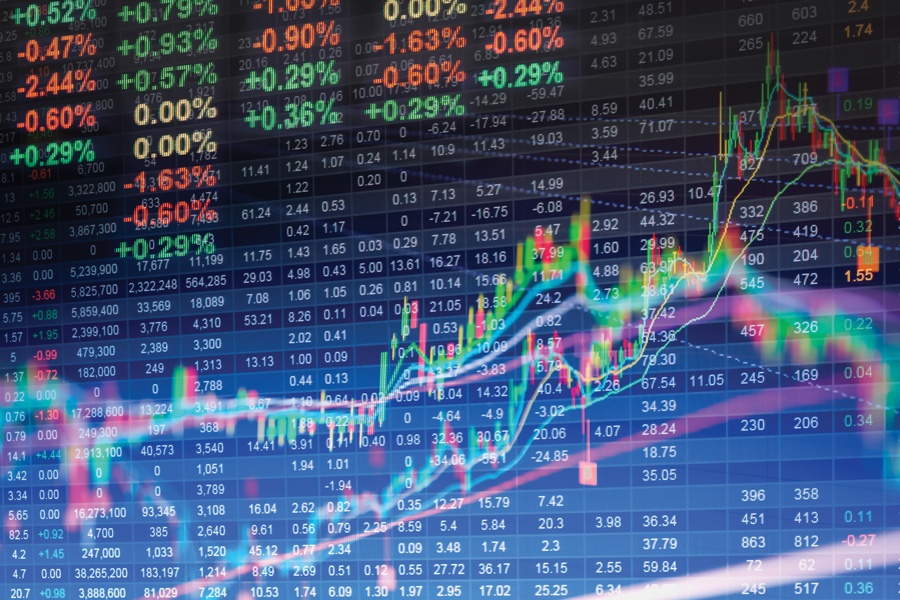

A widening stock-market rally pushed US stocks higher for the year amid optimism over a pause in the trade war between the US and China and signs of easing inflation.
The S&P 500 Index gained 0.7% at 10:37 a.m. in New York and the Nasdaq 100 Index rose 1.3%. If the advance lingers until 4 p.m., both gauges will close higher on the year. A basket tracking the so-called Magnificent Seven stocks, which houses behemoths like Nvidia Corp., Apple Inc. and Microsoft Corp., rose 1.8%.
The advance builds on Monday’s powerful rally that saw the S&P 500 jump 3.3% amid optimism over the US-China trade truce. The index now trades above where it stood when President Donald Trump first announced sweeping tariffs on April 2.
Tuesday’s rally kicked off before the opening bell after official data showed consumer prices rose by less than forecast in April for a third month. Swap traders now see at least two interest-rate cuts by the Federal Reserve in 2025, with the first fully priced in for September. JPMorgan Chase & Co. boosted its forecast for US economic growth, dropping its earlier call that the economy would sink into a recession.
“The softer headline and core inflation readings are welcome news for investors, as the risk of an instant pass-through from tariffs appears to have been avoided,” Josh Jamner, investment strategy analyst at ClearBridge Investments, wrote in a note.
Gains were kept in check after UnitedHealth Group Inc. named board Chairman Stephen Hemsley as its new chief executive officer, replacing Andrew Witty. Shares of the company dropped 15%, dragging down other health insurers. UnitedHealth suspended its full-year guidance, citing higher-than-expected medical expenditures. Shares of peers Elevance Health Inc., CVS Health Corp. and Humana Inc. all dropped. Boeing Co. shares rose 3%, with investors hopeful that Beijing may lift a ban on the jet maker’s deliveries.
Challenges remain in talks between the world’s two largest economies and many countries have yet to negotiate tariff-alleviating deals of their own.
“Tariffs are still present and they are not going away anytime soon,” Skyler Weinand, chief investment officer at Regan Capital, wrote in a note. “The Fed will likely weigh any uptick in unemployment with a tad bit more weight than increasing inflation should unemployment creep towards 5%.”
Still, some Wall Street strategists have turned more bullish on US stocks after the tariff deal.
Goldman Sachs Group Inc. strategists led by David Kostin see the S&P 500 reaching 6,500 in the next 12 months, up from 6,200 previously. The new estimate implies a gain of about 11% from Monday’s close.
Ed Yardeni, the president of Yardeni Research, boosted his year-end target to 6,500 from 6,000 as he cut recession odds to 25% from 35%.
Among other stocks, Coinbase Global Inc. climbed 17% after S&P Dow Jones Indices said the company will join the S&P 500 before trading opens on May 19. Enphase Energy Inc. fell 5.7% after BMO cut its recommendation on the solar energy equipment manufacturer to underperform, citing planned Federal Government tax changes as a headwind for residential solar.
Meantime, 3D Systems Corp. tumbled 26% after the 3D-printer maker reported products revenue for the first quarter that missed the average analyst estimate.

AI suite and patent for AI-driven financial matchmaking arrive amid growing importance of marketing and tech among advisory firms.

The RIA's addition in Dallas, previously with Raymond James, comes just as the take-private deal between Corient's parent firm in Canada and Mubadala Capital comes to completion.

LPL's head of HNW planning says too many advisors are making a common mistake.

Market risk index shows hidden perils in seeking safety, and potential benefits from non-traditional investment vehicles.

Friends and family members are "the easiest type of victim to profile and steal from," said one attorney.
Stan Gregor, Chairman & CEO of Summit Financial Holdings, explores how RIAs can meet growing demand for family office-style services among mass affluent clients through tax-first planning, technology, and collaboration—positioning firms for long-term success
Chris Vizzi, Co-Founder & Partner of South Coast Investment Advisors, LLC, shares how 2025 estate tax changes—$13.99M per person—offer more than tax savings. Learn how to pass on purpose, values, and vision to unite generations and give wealth lasting meaning
